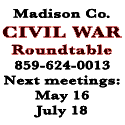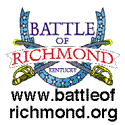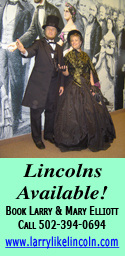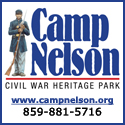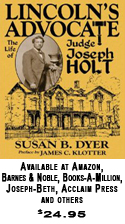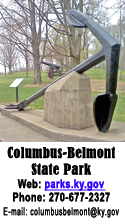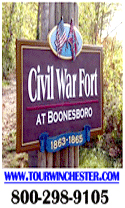|
Bugle editorial
Spiritual leaders really had it difficult
with all believing God was on their side
Take the skin of a rhinoceros, delete all weapons, throw in the nine lives of a cat and what do you get?
A Civil War chaplain.
It has been reported that some 41 Confederate chaplains died in the War Between the States, either from exhaustion or disease. Initially, the South didn’t want any chaplains as the military leaders went by the notion of hating and killing the enemy. Turning the other cheek was not in vogue.
But, in time that changed. Sending troops to be killed weighed heavily on Southern generals, according to Ron Long, a Pennsylvanian who portrays a man of God at battle re-enactments. And having someone with whom the commanders could vent their frustrations made a difference.
Apparently there was no shortage of Southern chaplains. Approximately 200-300 men were certified as preachers or said they were willing to assume the task.
On the Union side, President Abraham Lincoln was interested in chaplains and when the war first started, he asked for 75,000 volunteers so that soldiers could have moral and spiritual guidance. At that point, there were no set qualifications for chaplain and the spiritual leaders ranged from illiterates to those who had attended college. Their ages ranged from about 19-60 with the average from 35-40 years of age. Most held the rank of captain and were paid approximately $1,400 a year.
Long said he found in his research that most chaplains were Methodists, with some being Catholic, Jewish, Lutheran and other protestant denominations. About 2,500 chaplains total served in both armies during the war.
There were two types of chaplains, those who served in regiments and others who worked in hospitals. Those in hospitals held prayer services, assisted surgeons with amputations and helped nurses take care of the men who were bedridden. They also helped in writing letters to homes.
A common denominator was to nurture the living, care for the wounded and honor the dead. The history of the chaplaincy, which has evolved tremendously through the years, is one of the oldest branches in the Army, having been authorized originally by George Washington.
One of Kentucky’s most active re-enactment chaplains is Rev. J.W. Binion, a native of Owensboro. A United Methodist minister, Binion portrays a Confederate chaplain and is chaplain for the 5th Kentucky Volunteer Infantry Regiment. He also portrays Lt. Gen. and Bishop Leonidas Polk and C.S.A. President Jefferson Davis.
Both the North and the South believed that God was on their side during the war. At Gettysburg battlefield there’s a monument to Father William Corby, who is positioned with arms outstretched. For many, that’s an indication that the warriors from both sides had one thing in common. They all were children of God.
|

